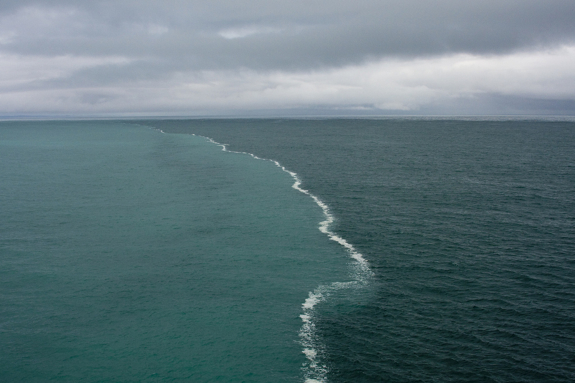Scientists Dismiss Geo-Engineering as a Global Warming Quick Fix
A new study shows that dispersing minerals into oceans to stem climate change would be an inefficient and impractical process
![]()

A new study shows that dispersing minerals into oceans to stem global warming would be an inefficient and impractical process. By Kent Smith
Installing a giant mirror in space to block sunlight, dispersing mass quantities of minerals into the oceans to suck carbon dioxide from the air and infusing the Earth’s upper atmosphere with sun-reflecting chemicals might sound like the stuff of science fiction, but they’re actual techniques that have been contemplated by scientists as possible quick solutions to climate change. More specifically, they’re examples of geo-engineering, a hotly contested subset of climate science whereby the Earth’s environment is intentionally manipulated in order to mitigate the effects of global warming.
Since cutting greenhouse gas emissions has been something of an exercise in futility, the idea behind geo-engineering is to put systems in place that manage the carbon dioxide that’s already emitted into the atmosphere. The two basic methods are solar radiation management—whereby a small amount of the sun’s heat and light is reflected back into space—and carbon dioxide removal, which involves the capture of CO2 or its uptake by the oceans.
A new study published yesterday in the journal Environmental Research Letters poked holes in one proposed approach to carbon dioxide removal. The research, conducted by scientists from Germany’s Alfred Wegener Institute for Polar and Marine Research, showed that dissolving the mineral olivine into the oceans would be an inefficient way of reducing atmospheric carbon dioxide.
The researchers used computer modeling to study six scenarios of dissolving olivine into the oceans—a process that increases the alkalinity of the water, which in turn allows the seas to absorb more carbon dioxide from the atmosphere. The results revealed the following limitation: Dispersing three gigatons (equal to three billion tons) of olivine into the oceans compensated for just roughly nine percent of the planet’s current CO2 emissions. To do the entire job would require 40 gigatons–an excessively large amount of the mineral.
Crushing all of that rock into a fine-enough powder for it to easily dissolve would present another set of environmental problems, according to the researchers. “nergy costs of grinding olivine to such a small size suggest that with present day technology, around 30 per cent of the CO2 taken out of the atmosphere and absorbed by the oceans would be re-emitted by the grinding process,” the lead author of the study, Peter Köhler, said in a statement.
“If this method of geoengineering was deployed, we would need an industry the size of the present day coal industry to obtain the necessary amounts of olivine,” Köhler added. Olivine is found beneath the Earth’s surface. To distribute such a large quantity of it would require a fleet of 100 large ships.
The researchers also concluded that mass dissolution of olivine would have a few side effects. Iron and other trace metals would be released into the seas, which would result in ocean fertilization, a process that can spark plankton blooms. On the flip side, ocean acidification, another climate change woe, would actually improve with olivine dissolution. The rise in alkalinity would counteract ocean acidification.
But overall, the process would be far from a quick cure-all. “The recent fossil emissions… are difficult if not impossible to be reduced solely based on olivine dissolution,” the researchers wrote. “It certainly is not a simple solution against the global warming problem,” Köhler added.
This study aside, many scientists have debated the merits of geo-engineering. Some are skeptical that greenhouse gas emissions will ever be effectively reduced and they see solar radiation management and carbon dioxide removal as viable alternatives. “People worry that if we use geoengineering, we wouldn’t reduce our greenhouse gas emissions,” Scott Barrett, a professor of natural resource economics at Columbia University, said in an interview published on the school’s Earth Institutes blog. “But we’re not reducing them anyway… And given that we have failed to address climate change, I think we’re better off having the possibility of geoengineering.”
Others disagree. “There’s no reason to think it’s going to work,” environmental activist and author Bill McKibben said in a recent interview with The Rumpus. “The side effects will probably be worse than the disease. And none of the things anyone’s talking about doing will do anything about the way we are destroying the ocean, which, even if nothing else was happening, would be enough to get off fossil fuels immediately.”